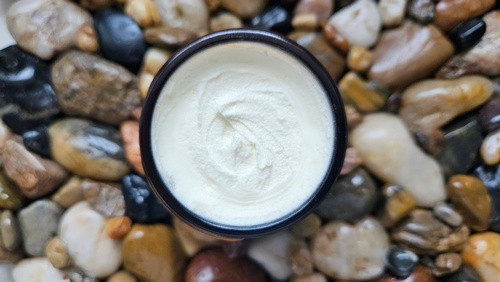Be Kind to Your Grains!
posted on
August 27, 2019

Freshness
We mill our flour fresh here at the farm with our Komo Mills. If you want to bake with flour that has the highest nutrient value and taste, go with freshly milled. Freshness is key. Once flour is milled, the protective coating is smashed to bits and some of the
sensitive insides are exposed to air, which changes everything. Some sources say that flour loses 40% of its vitamin content in the first 24 hours after milling and 85-90% after 2-3 more days. Here’s a little more in-depth science on what happens:
-Unsaturated fats in the wheat germ oxidize/go rancid.
-B Vitamins are destroyed by light and air.
-Beneficial enzymes start working and play themselves out.
-Vitamin A is diminished.
-Vitamin E, which is an antioxidant that helps to protect flour from oxidation, deteriorates once milled, especially if the conditions become moist.
The nutritional importance of using fresh milled grains for bread-making was revealed in the results of feeding studies in Germany (Bernasek, 1970). Rats were fed diets consisting of 50% flour or bread. Group 1 consumed fresh stone-ground flour. Group 2 was fed bread made with this flour. Group 3 consumed the same flour as group 1 but after 15 days of storage. Group 4 was fed bread made with the flour fed to group 3. A fifth group consumed white flour. After four generations, only the rats fed fresh stone-ground flour and those fed the bread made with it maintained their fertility. The rats in groups 3 to 5 had become infertile. Four generations for rats is believed to be equivalent to one hundred years in humans.
Heritage Grains
As part of the agricultural revolution, modern grains underwent substantive hybridization with the good intentions of increasing
production, increasing profitability and ultimately reducing the cost to the consumer. Unfortunately this was not all that was modified in the hybridization of modern grains. In selecting for yields, disease tolerance and improved storage life it is now believed that inadvertently the protein structures were changed and toxins may have been built up in the make-up of conventional grains. This in turn is suspected to be one of the reasons that so many people are becoming intolerant to wheat and why the modern grains store so long. Insects and pests are naturally repelled by these same toxins.
We grow grain varieties that pre-date this hybridization and the practice of industrial fertilizers, herbicides, insecticides and fungicides and high yield varieties. Old varieties, referred to as ancient and heritage varieties have been around for thousands of years
and are best suited to organic, low input agriculture. They are as nature designed them.
Proper Preparation
Our ancestors soaked or sour leavened their gluten-grains for easy digestion and highest nutrition. There are two main reasons for this
practice: break down gluten and neutralize phytic acid.
Gluten
Scientists have learned that gluten in grains is very difficult for our bodies to digest. A diet high in unfermented high-gluten grains puts an enormous strain on the whole digestive mechanism. When this mechanism breaks down with age or overuse, the results take the form of: allergies, celiac disease, mental illness, chronic indigestion and candida overgrowth.
During the process of soaking and fermenting, gluten is broken down into simpler components that are more readily available for absorption.
Phytic Acid
All grains contain phytic acid in the outer layer or bran. Untreated phytic acid can combine with calcium, magnesium, copper, iron and especially zinc in the intestinal tract and block their absorption. This is why a diet high in unfermented whole grains may lead to serious mineral deficiencies and bone loss. Soaking allows enzymes and other helpful organisms to break down and neutralize the phytic acid.
Don't treat your bread as loners!
Fat-soluble vitamins A and D found in animal fats like raw butter, lard and cream help us absorb calcium, phosphorus, iron, B vitamins and the many other vitamins that grains provide. Sourdough whole grain bread with raw butter or whole cheese is a combination that contributes to optimal health.
Sources
-Bernasek, 5th World Congress on Breads and cereals, Dresden, 1970. (cited in Aubert, 1989).
-https://eap.mcgill.ca/publications/EAP35.htm
-https://www.westonaprice.org/health-topics/food-features/be-kind-to-your-grains-and-your-grains-will-be-kind-to-you/




